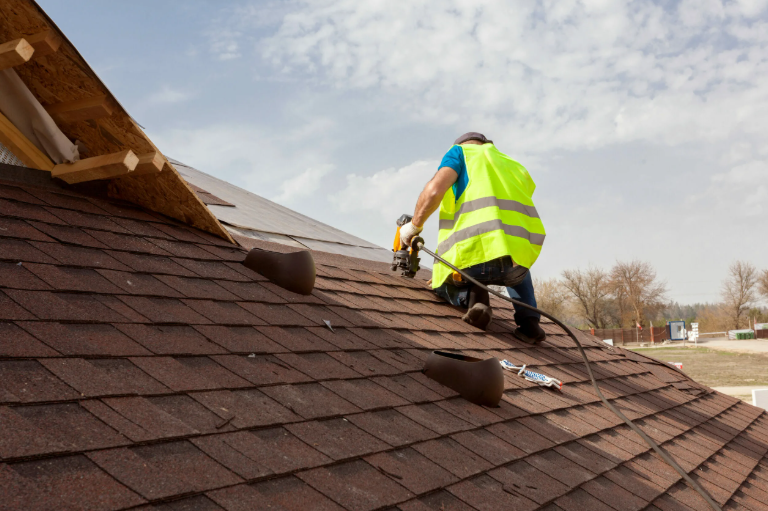
DIY Roofing Installation: What You Can Do (and What to Leave to the Pros)
A new roof is one of the biggest investments you’ll make for your home—but that doesn’t mean you can’t roll up your sleeves and tackle some of the work yourself. If you’re a handy homeowner wondering how far you can go with a DIY roofing installation, this guide will help you decide what parts of the job you can reasonably take on—and when it’s best to call in the pros.
We’ll walk through the different phases of roofing installation, break down the risks and rewards of doing it yourself, and show you how services like Chimney Care Service play a key role in your roof’s performance and longevity. Whether you’re replacing asphalt shingles or just making repairs, understanding the scope of roofing work is essential before climbing that ladder.
Why Homeowners Consider DIY Roofing
Let’s be real: Roofing labor is expensive. Many homeowners turn to DIY roofing for one big reason—to save money. Others enjoy the challenge and sense of accomplishment that comes with fixing up their home. If you’re reasonably fit, comfortable with tools, and not afraid of heights, doing some roofing tasks yourself might be a solid option.
However, not all roofing tasks are created equal. Some are perfectly safe and manageable with basic skills. Others? Not so much.
So before you start stripping off shingles, let’s break it down:
What You Can Do Yourself
1. Roof Inspections and Minor Maintenance
Inspecting your roof twice a year is one of the best things you can do to prevent costly damage. Look for:
-
Cracked or curling shingles
-
Missing shingles
-
Moss or algae buildup
-
Rusted or loose flashing
-
Clogged gutters
These are typically safe and easy tasks—especially if you can view your roof from a ladder rather than climbing on top of it.
Pro Tip: If your home has a chimney, be sure to inspect the flashing and mortar around it. This is a common area for leaks. If you spot damage, it’s smart to schedule a professional Chimney Care Service to handle repairs before water seeps in.
2. Gutter Cleaning and Repair
Cleaning your gutters helps prevent water from pooling around your foundation and roofline. It’s a simple job requiring:
-
A sturdy ladder
-
Work gloves
-
A garden hose or scoop
You can also tighten or replace loose gutter hangers if needed. Just make sure your ladder is placed safely on level ground and never work on wet or icy days.
3. Replacing a Few Shingles
If a storm has ripped off a couple of shingles, replacing them yourself can be a cost-effective fix. Here’s what you’ll need:
-
Replacement shingles
-
Roofing nails
-
A hammer or roofing nailer
-
Pry bar
-
Roofing cement
Carefully remove the damaged shingle, slide the new one in, and secure it. Just be cautious of your footing. Roofing surfaces are slippery, especially when dusty or wet.
4. Installing Roof Vent Covers
Proper ventilation extends the life of your roof and keeps your attic from overheating. If your roof vents are damaged or missing covers, replacing them is a good DIY task. It involves:
-
Unscrewing or prying off the old vent
-
Sealing the new one with roofing cement or flashing
-
Screwing it securely into place
Be sure to seal all edges tightly to prevent leaks.
What You Should Leave to the Pros
Now, let’s talk about the big stuff. These jobs may look doable on YouTube, but attempting them without experience can put you, your home, and your wallet at risk.
1. Full Roof Replacement
While tempting to tackle, a full roof replacement is a massive undertaking. It requires:
-
Stripping the old roof
-
Inspecting and possibly replacing sheathing
-
Laying underlayment and water barriers
-
Installing shingles, ridge caps, flashing, and vents
-
Complying with building codes and warranties
Even experienced DIYers often underestimate the physical labor, time commitment, and skill needed. Mistakes can lead to major leaks, void warranties, and unsafe conditions. Plus, insurance companies may not cover DIY installations if something goes wrong.
Smart Tip: Hiring a roofing company ensures proper installation and often comes with warranties. If you also have a chimney, ask whether they coordinate with Chimney Care Service providers to check flashing and sealing.
2. Chimney Flashing and Repair
Flashings are the metal pieces that seal areas where your roof meets walls, skylights, or chimneys. Poor flashing is one of the most common causes of roof leaks.
Installing chimney flashing requires:
-
Cutting and fitting sheet metal
-
Sealing with roofing tar or cement
-
Integrating with existing shingles and underlayment
If it’s done wrong, water will sneak behind the flashing and rot your roof from the inside out. This is a job that should always be handled by a pro, preferably one who offers both roofing and Chimney Care Service expertise.
3. Structural Repairs
If your roof deck (the plywood base beneath your shingles) is soft, sagging, or moldy, this is not something to DIY. Structural issues require:
-
Removing roof layers
-
Replacing rafters or trusses
-
Ensuring load-bearing compliance
-
Reapplying all roofing materials correctly
Professionals will assess the integrity of the framing and ensure it meets safety standards. It’s not just about your roof—it’s about your whole home’s safety.
4. Installing Skylights or Solar Panels
Cutting into your roof to add a skylight or solar panel mounts is extremely risky. It opens your home to potential leaks and structural damage if not sealed properly.
These installations often require permits, engineering knowledge, and professional sealing techniques. The cost of fixing a bad install far exceeds the cost of hiring a licensed contractor upfront.
Safety First: Know the Risks
Even if you’re capable, roofing can be dangerous:
-
Falls: Roofing is one of the top causes of home improvement injuries.
-
Heat Exposure: Working on a roof in summer sun can lead to heat stroke.
-
Tool Injuries: Roofing nailers and circular saws are not beginner tools.
-
Material Handling: Shingles are heavy and awkward, and hauling them up ladders is a challenge.
Always wear safety gear—non-slip boots, harnesses, gloves—and never work alone.
Cost Comparison: DIY vs. Hiring a Pro
| Task | DIY Cost (Estimate) | Pro Cost (Estimate) | Risk Level |
|---|---|---|---|
| Gutter cleaning | $0–$50 | $100–$250 | Low |
| Replacing a few shingles | $50–$150 | $150–$300 | Medium |
| Full roof replacement | $2,000–$4,000 | $8,000–$15,000+ | High |
| Chimney flashing repair | $75–$150 materials | $300–$600+ | High |
Remember: DIY may save money upfront, but the cost of errors can be significant.
Chimney Care and Your Roof: Don’t Overlook It
Your chimney is more than just a brick column—it’s a critical part of your roof’s water management system. Chimneys can become points of entry for water, pests, and heat loss.
That’s why working with a Chimney Care Service is so important. They can:
-
Reseal or repair the chimney flashing
-
Clean creosote buildup (which can be a fire hazard)
-
Repoint mortar joints
-
Install or repair chimney caps
-
Conduct smoke and draft inspections
Scheduling an annual chimney check-up along with roof inspections ensures your entire system is functioning as one unit.
Final Thoughts: Know Your Limits
Tackling minor roofing tasks yourself can be a smart, satisfying way to care for your home. It’s a great way to stay engaged with your property’s condition and save money on basic maintenance.
But when it comes to full replacements, chimney integration, or structural work, professional help isn’t optional—it’s essential. Invest in the longevity of your roof and the safety of your home by calling in the pros when needed. And don’t forget: a qualified Chimney Care Service provider is just as important as your roofer.
Whether you’re patching up a few shingles or planning a full roof upgrade, a smart homeowner knows when to climb the ladder—and when to pick up the phone.
FAQs
1. Can I install a new roof by myself?
Yes, but it’s risky. DIY roof installation requires advanced skills, permits, tools, and safety equipment. It’s usually best left to professionals, especially if your roof is steep or large.
2. How often should I schedule a Chimney Care Service?
At least once a year. Annual chimney inspections help prevent leaks, fire hazards, and damage to your roof and home structure.
3. Is it cheaper to do roofing work myself?
For small jobs like cleaning gutters or replacing a few shingles, yes. But for large projects like full replacements or flashing repairs, hiring a pro prevents costly mistakes and often includes warranties.



